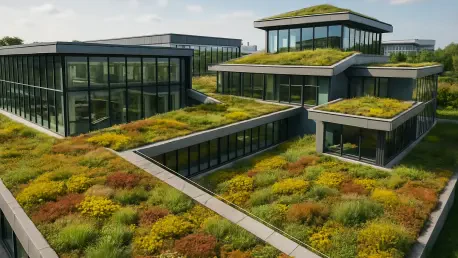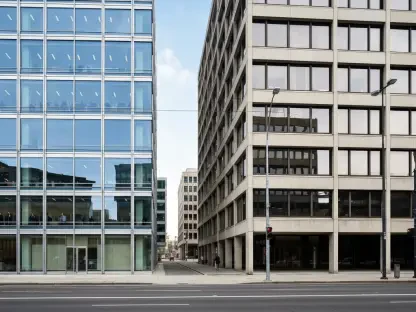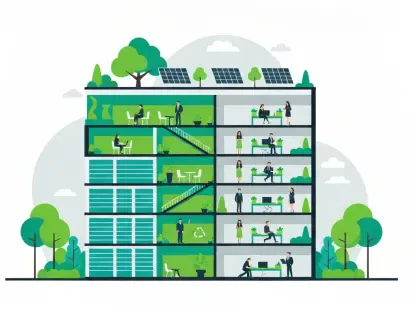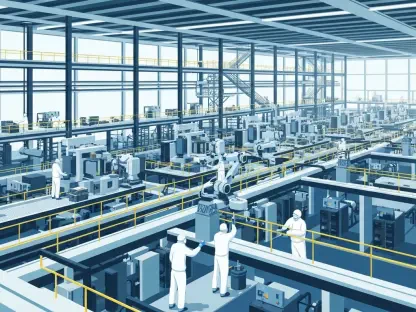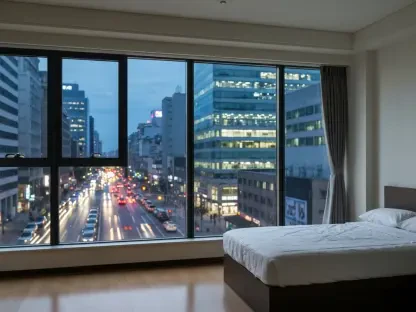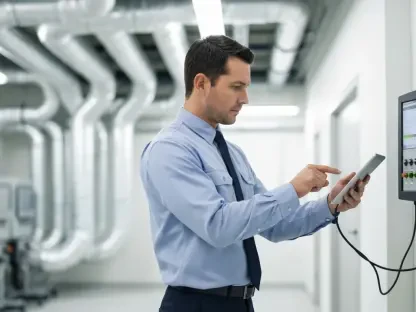In the heart of bustling cities, where concrete often overshadows greenery, a quiet revolution has been taking place on rooftops for the past two decades, driven by Skyland USA’s Rooflite. Since its inception in 2002, Rooflite has grown from a small regional supplier of engineered soil to a global leader, with over 30 million square feet installed across diverse urban landscapes. This remarkable journey reflects not just business expansion but a profound shift in how green roofs are perceived and implemented in modern architecture. What began as a niche concept for stormwater management has evolved into a cornerstone of sustainable design, thanks to Rooflite’s relentless innovation and adaptability. From lightweight soil blends to complex systems supporting rooftop farms, their contributions have redefined urban spaces, making them more livable and environmentally friendly. This exploration uncovers the milestones, projects, and forward-thinking strategies that have positioned Rooflite as a transformative force in green roof technology.
Building a Foundation of Innovation
Rooflite’s story started humbly in 2002, with an initial supply of 25,000 square feet of soil for on-structure applications, setting the stage for the formal establishment of Skyland USA a few years later. The arrival of Peter Phillippi, a German expert in green design, brought a clear vision to prioritize high-quality soil media tailored for green roofs. By 2008, the company celebrated a significant achievement, having installed its first million square feet, a testament to rapid growth and early acceptance in the industry. This period was marked by a dedication to creating lightweight soil blends suitable for extensive green roofs, meeting the basic needs of architects and builders focused on energy efficiency. The emphasis on quality from the outset helped establish trust, particularly in the Mid-Atlantic region, where early projects showcased the potential of green roofs to transform urban environments. Rooflite’s ability to adapt its products to emerging demands during these formative years laid a robust groundwork for future innovation and expansion.
The momentum from those early successes fueled a broader mission to push the boundaries of what green roofs could achieve. Beyond just providing soil, Rooflite began to address specific challenges faced by designers, such as weight constraints and drainage issues on building structures. The development of specialized products for varied applications became a hallmark of their approach, distinguishing them from competitors. Collaborations with architects and builders revealed a growing appetite for more than basic functionality; there was a desire for aesthetic and ecological value as well. This insight drove Rooflite to refine their offerings, ensuring that even the most ambitious rooftop visions could be realized without compromising structural integrity. By focusing on both technical precision and customer needs, Rooflite not only solidified its reputation but also began to influence how green roofs were integrated into urban planning, setting a high standard for sustainability and design flexibility in the industry.
Showcasing Impact Through Iconic Projects
Rooflite’s influence on urban sustainability shines through an impressive array of projects that have tackled pressing environmental challenges. Their first major undertaking in New York City in 2006 garnered widespread attention, earning mentions in prominent outlets and signaling their arrival on a larger stage. Fast forward to the Nashville Music City Center project in 2012, where a sprawling 191,000-square-foot green roof now manages an astonishing 2.6 million gallons of stormwater annually. Such initiatives highlight how Rooflite’s engineered soils contribute to mitigating urban flooding while enhancing the visual appeal of cityscapes. These projects are more than just installations; they represent a shift toward viewing rooftops as vital components of ecological infrastructure, capable of addressing issues like heat islands and energy consumption in densely populated areas.
Further examples, such as the Target Center Arena retrofit in Minneapolis and the US Coast Guard Headquarters, underscore the versatility of Rooflite’s solutions across different climates and building types. The Minneapolis project alone captures nearly a million gallons of stormwater each year, demonstrating the tangible benefits of their lightweight soil blends in existing structures. Meanwhile, international endeavors like the Artz Pedregal Building in Mexico City show how Rooflite adapts to diverse geographic and architectural demands, ensuring functionality without sacrificing sustainability. Each project serves as a case study in how green roofs can reduce building energy costs and create lush, functional spaces that benefit both the environment and urban dwellers. Through these landmark installations, Rooflite has proven that green roofs are not mere add-ons but essential elements of modern city planning, capable of delivering measurable environmental and economic advantages.
Evolving With Industry Demands
The green roof sector has undergone significant transformation over the years, and Rooflite has consistently stayed ahead by aligning its products with emerging trends. Initially, the focus was on extensive systems designed for stormwater control and basic energy savings, using lightweight soils to minimize structural load. However, as urban design priorities shifted toward creating more dynamic rooftop spaces, the demand for intensive green roofs grew, requiring soils that could support a wider range of vegetation, from perennials to trees. Rooflite responded by diversifying its product line, introducing solutions like intensive base soils that balance drainage and plant health. This adaptability ensured that ambitious projects, including public amenity spaces, became feasible, reflecting a broader societal push for greener, more livable cities.
A pivotal moment came with the rise of rooftop agriculture, exemplified by the Brooklyn Grange Farm project in 2014, which highlighted the potential for green roofs to serve as productive landscapes. Rooflite’s development of agricultural soil products tailored for such intensive applications showcased their foresight in meeting niche but growing needs. This trend toward multi-functional rooftops, where spaces double as farms or recreational areas, has been supported by specialized planter systems designed for deeper root structures and larger plants. By anticipating and addressing these evolving requirements, Rooflite has played a key role in mainstreaming green roofs as standard features in both new constructions and retrofits. Their contributions have helped shift perceptions, positioning green roofs as integral to sustainable urban planning rather than optional luxuries, thus driving wider adoption across architectural practices globally.
Revolutionizing Operations for Scalability
One of Rooflite’s most significant contributions to the green roof industry lies in its operational ingenuity, particularly through the creation of a “blender network” spanning the United States and international locations like Australia and Mexico. This network consists of strategically positioned facilities that produce region-specific soil blends using local materials, ensuring consistency in quality while minimizing transportation-related carbon emissions. The system allows for tailored solutions that meet the unique environmental and logistical needs of each project, whether it’s a small urban retrofit or a large-scale public infrastructure development. This approach not only enhances accessibility but also reduces costs, making green roof technology more viable for a broader range of clients and applications.
Beyond environmental benefits, the blender network exemplifies Rooflite’s commitment to efficiency through just-in-time delivery and streamlined logistics. By maintaining facilities close to project sites, delays are minimized, and the freshest possible soil blends are provided, which is critical for plant health and project timelines. This operational model has set a new benchmark in the industry, demonstrating how scalability can be achieved without sacrificing sustainability or quality. The ability to cater to diverse projects, from local initiatives to international endeavors, underscores Rooflite’s role as a facilitator of green roof adoption on a global scale. As cities continue to grapple with urbanization challenges, such innovative systems ensure that sustainable solutions remain within reach, reinforcing Rooflite’s position as a leader in operational excellence and environmental responsibility.
Shaping Tomorrow’s Urban Landscapes
Reflecting on two decades of progress, Rooflite’s journey stands as a powerful example of how dedication to innovation and sustainability can transform an industry. Their early milestones, iconic projects, and operational advancements have collectively reshaped urban environments, turning rooftops into vital assets for ecological balance. The impact of their work is evident in every gallon of stormwater managed, every energy dollar saved, and every green space created amidst concrete jungles. Looking back, their adaptability to industry shifts and commitment to quality were the cornerstones of a legacy that has inspired countless architects and planners.
As the focus shifts to the future, Rooflite’s vision remains clear: to drive the next era of green roof design with cutting-edge soil technology and customer-centric solutions. Urban challenges like climate change and population density demand even more resilient and multifunctional spaces, and Rooflite is poised to lead this charge. For stakeholders in architecture and city planning, the path forward involves leveraging such expertise to integrate green roofs into broader sustainability strategies. Exploring partnerships with innovators like Rooflite can unlock new possibilities, ensuring that cities not only grow upward but also greener, fostering environments where nature and urban life coexist harmoniously.
